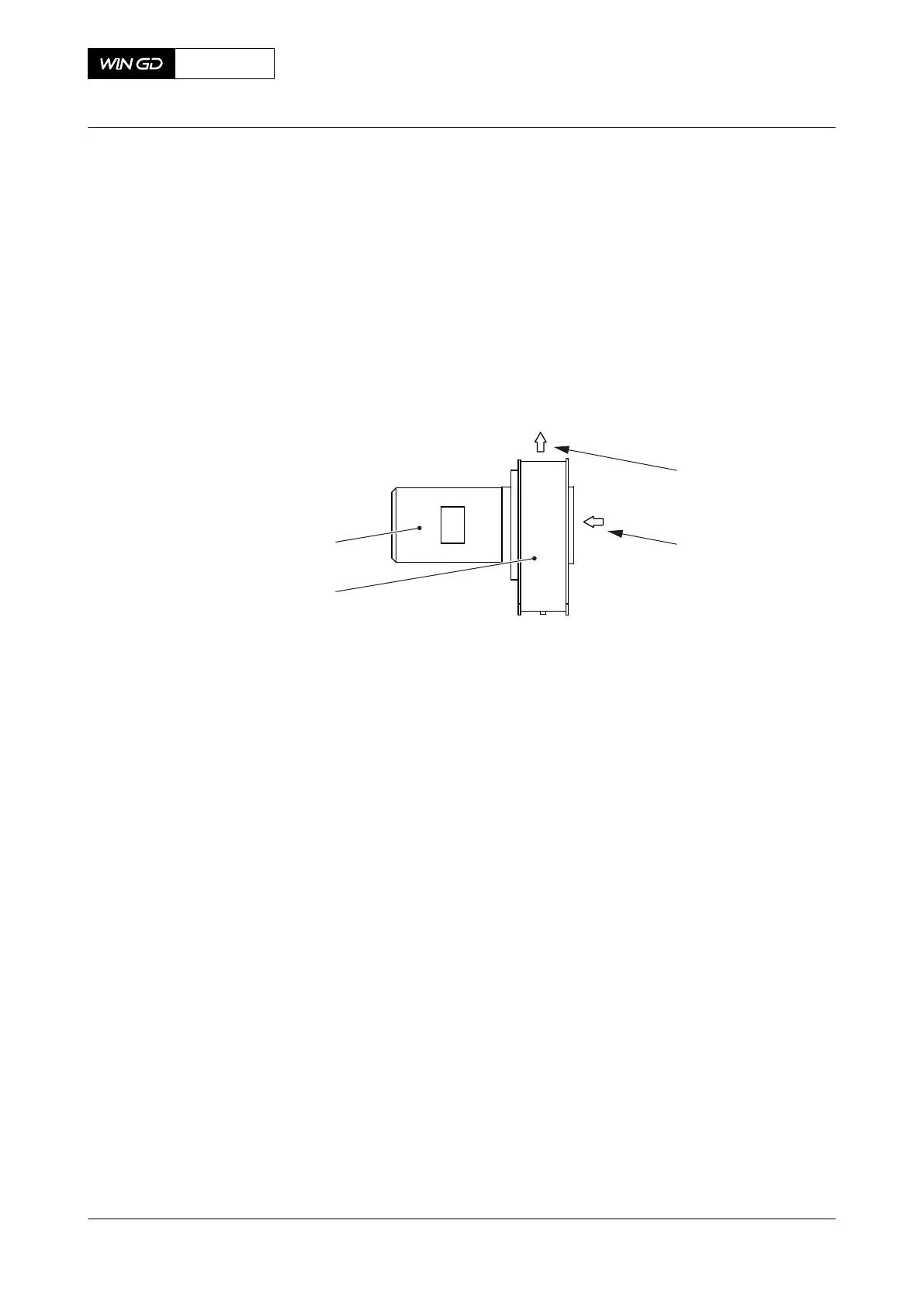5.6.3 Auxiliary blower
The two auxiliary blowers supply air from the air space into the receiver space during the engine
start and during operation at low load. Flaps prevent airflow back from the receiver space to the
air space during usual operation of the turbochargers and during engine stop.
The electric motor (004, Figure 5-44) operates the blower (003).
The auxiliary blowers are installed on the scavenge air receiver, refer to section 5.6.1 Scavenge
air receiver.
Fig 5-44 Auxiliary blower (generic)
Legend
001 Air outlet 003 Blower
002 Air inlet 004 Electric motor
During the engine start procedure, the first auxiliary blower starts immediately. After
approximately two to three seconds, the other auxiliary blower starts.
If one of the auxiliary blowers becomes defective, you also can start and operate the engine. At
less than full load, there will be more exhaust smoke.
If the two auxiliary blowers become defective, you cannot start the engine.
When the turbochargers give sufficient pressure in the scavenge air receiver, the auxiliary
blowers stop.
If the scavenge air pressure decreases below the minimum pressure necessary, the auxiliary
blowers operate as given above.
The auxiliary blower switch box (refer to section 5.6.4 Auxiliary blower switch box) controls and
gives data about the condition of the auxiliary blowers.
X92DF
AA00-6545-00AAA-043A-A
Operation Manual Auxiliary blower
Winterthur Gas & Diesel Ltd.
- 226 - Issue 002 2020-08
